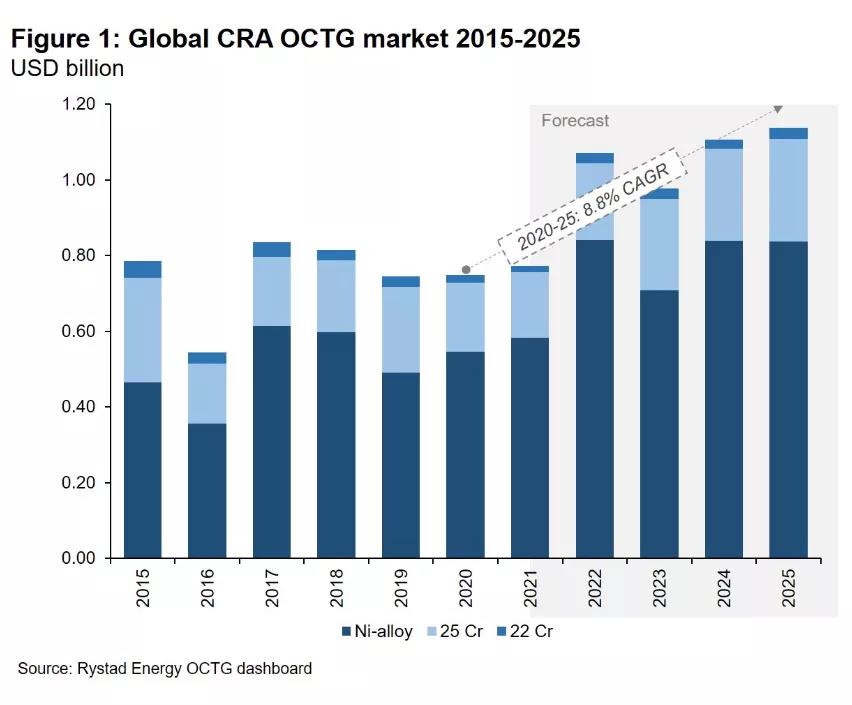
Home>News>Industry news>By 2022, the global corrosion-resistant alloy tubing and casing market is expected to exceed US$1 billion
By 2022, the global corrosion-resistant alloy tubing and casing market is expected to exceed US$1 billion
Corrosion-resistant alloy tubing and casing (OCTG) is the highest grade of steel used to manufacture OCTG pipes. Due to the complex technical process of commercial production of these steel grades, only a few manufacturers have entered the market. These steel grades range from duplex steel (22% chromium content) to super duplex steel (25Cr) to nickel alloys (up to 28% chromium, but nickel content is also quite high, exceeding 29%). The advantages of these steel grades in terms of corrosion resistance and prevention of oil well failures allow them to be used in the most extreme drilling environments with high hydrogen sulfide and carbon dioxide content, which are usually accompanied by high pressure and high temperature (HPHT) conditions. Nickel alloy OCTG is widely used in sulfur-containing wells in the Persian Gulf and Central Asia (Kazakhstan), and duplex steel is more common in offshore wells in Brazil, West Africa, Australia and Southeast Asia. In addition, all these corrosion-resistant alloy steel grades are common in wells in the North Sea, the Gulf of Mexico, and Australia, because these areas have high pressure and high temperature wells. On the contrary, although the United States and Russia are the two largest OCTG markets, these OCTG steel grades are not commonly used in onshore drilling activities in these two markets because they do not have extreme drilling environments.

